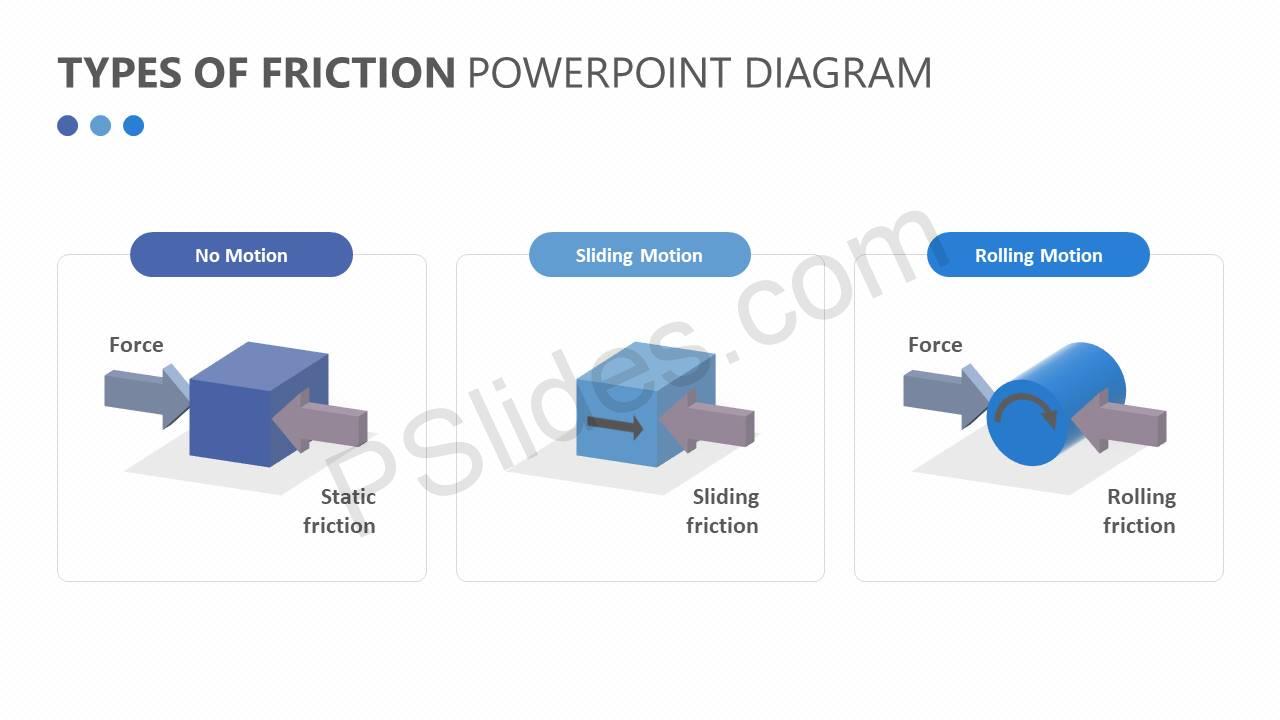Back to: BASIC TECHNOLOGY JSS2
Welcome to Class !!
We are eager to have you join us !!
In today’s Basic Technology class, We will be discussing Friction. We hope you enjoy the class!

Friction is a force resisting motion of an object when in contact with another. This resistive force is caused by the surface roughness of the contact area of the materials, molecular attraction or adhesion between materials, and deformations in the materials. The cause of friction may be any or all of these items and this applies to sliding, rolling and fluid frictions.
Types of friction
‘Rolling friction’ is the force that resists motion when an object rolls on a surface. Technically it’s not friction; its ‘rolling resistance’ since when a body rolls perfectly upon a surface, on paper, there is no sliding friction between that object and surface. But due to elastic properties in real life, both the bodies and the surface experience deformations due to contact between the bodies.
Sliding friction’ is the frictional force between two surfaces that are rubbing against each other. It’s a very easy and common concept. It’s hard to find a perfectly smooth surface in the real-life, therefore when an object slides on any surface, it undergoes a backward force because of the relative motion between the two adjacent surfaces. It always acts against the motion.
Fluid friction when fluid layers are moving relative to each other, a type of friction occurs which is known as ‘fluid friction’. The internal resistance to the flow of fluids is termed ‘viscosity’; in simple terms, the viscosity is nothing but ‘thickness’ of a fluid.

Applications of friction
Friction plays an important part in many everyday processes. For instance, when two objects rub together, friction causes some of the energy of motion to be converted into heat. This is why rubbing two sticks together will eventually produce a fire.
Friction is also responsible for the wear and tear on bike gears and other mechanical parts. That’s why lubricants, or liquids, are often used to reduce the friction — and wear and tear — between moving parts.
Advantages of friction:
- Friction enables us to walk freely.
- It helps to support a ladder against a wall.
- It becomes possible to transfer one form of energy to another.
- Objects can be piled up without slipping.
- Breaks of vehicles work due to friction.
Disadvantages of friction:
1. It always resists the motion, so extra energy is required to overcome it.
2. It causes wear and tear of machines.
3. It decreases the life expectancy of moving parts of vehicles.
4. Since friction is very useful in some cases while harmful in some cases, friction is called a necessary evil.
Effects of Friction
- It produces heat, that helps in heating parts of any object or to warm ourselves.
- It also causes loss of power.
- It produces noise during any kind of operation.
- It’s because of friction that we’re able to walk, run, play, etc.
We have come to the end of this class. We do hope you enjoyed the class?
Should you have any further question, feel free to ask in the comment section below and trust us to respond as soon as possible.
We have come to the end of this Term. It has been a remarkable journey from first Term. We can’t wait for you to join us in third term.

l love the presentation.